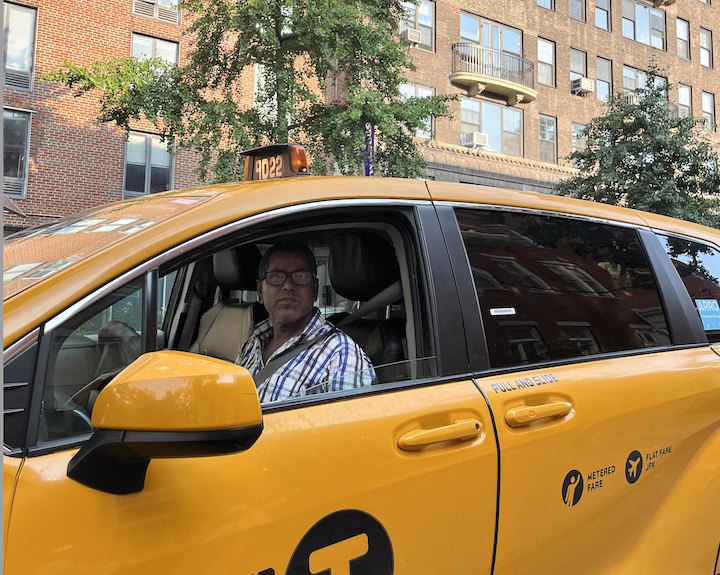Business Economics News
New York’s iconic, disappearing yellow cabs
By Giana Nevarez Tevere
It used to be that, on a busy day, yellow taxi driver Kazi Asaduzzaman would pick up around 30 passengers. But that Tuesday in July, half that number got into his back seat.
“Because of Uber and Lyft, there is no more business for us taxi drivers,” said Asaduzzaman, 64, who’s earned a living driving taxis for 25 years. “I get lucky if I am able to pick up multiple passengers in the same day.”
His income has dropped substantially since Uber and Lyft apps made it easier to get and pay for a ride. Fewer than half of the city’s 13,587 medallion taxis, which riders have hailed from street corners and sidewalks for more than a century, use those apps or the Curb app.
The number of trips per day made through ride-scheduling apps peaked in February 2020 at 749,129. During that same month, taxis made 217,216 trips per day, according to the New York City Taxi & Limousine Commission. For medallion taxis, Uber and Lyft, the numbers dropped further during and after the pandemic. As of May 2025, all Ubers and Lyfts averaged 680,359 trips per day, while taxis averaged 146,482. As of 2024, the number of yellow taxis on streets across the five boroughs has dropped by more than 50%, while the price of a medallion, which drivers must have to transport passengers legally, has decreased from roughly $1 million to, in some cases, less than $100,000.
New Yorker Barbara Zhang, who was reading her book on a bench in Washington Square Park, said the decline in medallion taxis and rise of ridesharing is a bad thing. “It’s another way for the city to continue to be dominated by monopolies.”
Asaduzzaman said he is concerned about what the decline in medallion taxis and taxi passengers means for the immigrants who make up most of the taxi driver workforce. He moved to the United States from Bangladesh when he was 18. And has used his job as a taxi driver to earn money for his wife and four children, the youngest being 16. “I do it for my family,”Asaduzzaman said.
The taxi industry gives opportunities to immigrants who may not have academic and other credentials required for better-paying jobs, says the New York Taxi Workers Alliance.
This union advocates for the taxi drivers who are bearing the brunt of their industry’s decline. Though the alliance says it works on behalf of 180,000 licensed drivers, some wonder how successful the union’s protests, media appearances and so forth actually help.
“The taxi alliance holds protests,” Azaduzzaman said. ”But no one ever listens,”


